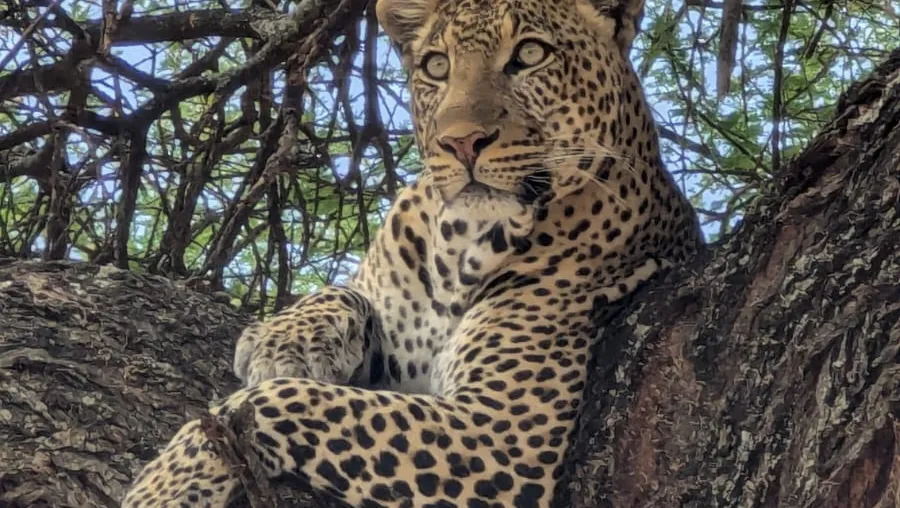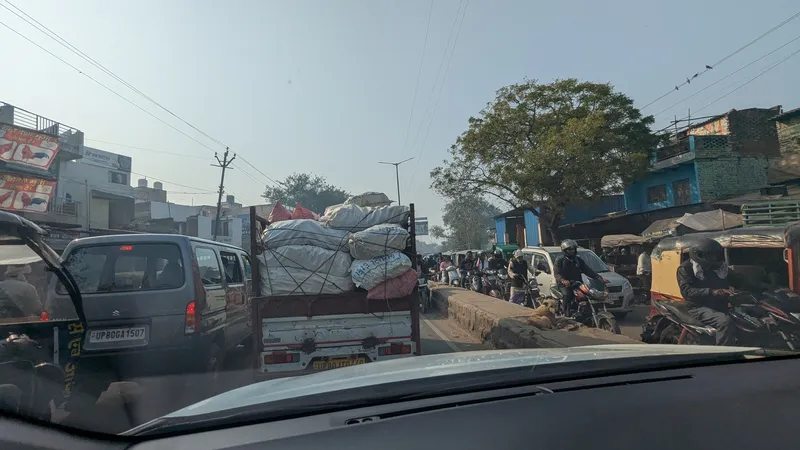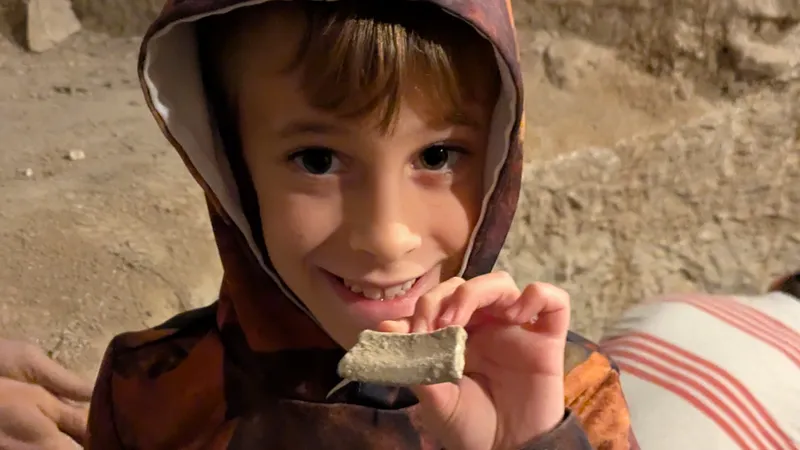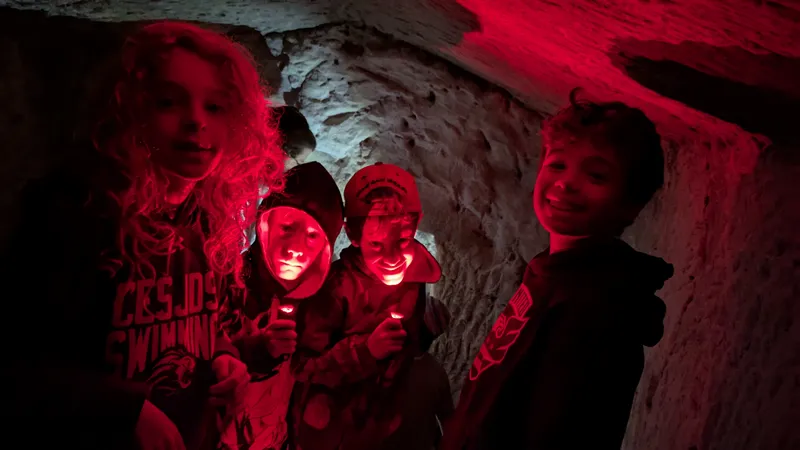These things occurred on Tuesday November 5, 2024 in Arusha, Tanzania
Amichai, who had spent the night before dealing with fever chills and sweats, woke up at 6:30AM feeling better. He downed an instant noodle soup and Nature Valley bar that I had been keeping as part of my emergency food reserves. By the time he finished eating he was feeling so much better. Thank goodness because as a family we had been looking forward to our second safari drive the moment our first one ended. More importantly, this safari was on the way to Ngorongoro Crater and we wouldn’t be returning to our inn for two days.
Tarangire National Park is a beautiful park in Tanzania. It is known for having leopards, elephants, lions, hippos, weavers, baboons, and so much more. We had an amazing time at the park. There were so many more animals at Tarangire than at Arusha National Park, making us turn our heads every which way. A little bit into a our drive, our guide, Hosea, stopped the jeep. We saw absolutely nothing and could not understand what he was looking at. Taking out his binoculars, he gasped and after a moment told us to look in a tree about 200 meters away. The tail of a leopard was hanging down through the branches. It took the rest of us several moments to figure out what he was talking about. Next thing we knew, he off-roaded and parked the jeep directly under the tree.
The leopard was truly majestic, peering down at us with its yellow marble-esque eyes and gorgeous spotted fur. It was only a few feet away from us. Chaim was able to get an amazing photograph that Hosea then sent to all of his guide friends, but no one believed Hosea that the picture was from Tarangire National Park. It had been a long time since anyone had spotted a leopard there. After many minutes of staring at the magnificent creature in front of us, we left the leopard in peace. Hosea was sure to tell the next jeep that drove by, but by then the leopard had jumped down from his branch and quickly disappeared into the brush.
I asked Hosea how often leopards are seen in Tarangire. He explained that a leopard is a very rare find, often harder to find than lions because leopards live alone within large swaths of territory. We were very lucky to have seen it and been so close to it for so long.
As we drove further into the park, we saw many more elephants, including a few playing in the mud and trumpeting at each other. Then, Hosea went a completely different direction than the other jeeps, taking us up to a cliffside overlooking a ravine bordering a small river. From there, we could see impala, warthogs, hyenas, zebras, elephants, buffalos, wildebeests, giraffes, monkeys, dik dik, eagles, and ostriches. Several animals were standing in the water enjoying a cool drink under the hot sun.
Hosea, our eagle eye, noticed three lionesses preparing for a hunt. He gave us his binoculars so that we could get a better look. Slowly, slowly they emerged from the shade of a tree one by one. It was impressive to watch them patiently skulk through the tall grass, their camouflage making it hard to keep track of them. The lionesses stopped a few yards away from each other, staggering their approach. Suddenly, they began sprinting toward the river. All of the animals in the water were able to escape this time around. Tired from their sprint, the lionesses took a break in the cool water. Somewhere between watching them lap up the water and looking for other animals in the tall glass, a zebra was killed. The lions had finally gotten their meal. The entire episode was breathtaking.
At lunch time we drove to another overlook with plenty of tables with umbrellas and benches to enjoy our food. Hosea warned us that there would be many monkeys waiting to snatch our food. He wasn’t joking. Monkeys lined the overlook, were in the trees, and could be seen taking unwatched food so fast it was hard to believe it even happened. The boys oohed and aahed at the monkeys, especially the babies who clung to their adults.
From Tarangire National Park we drove to the Mto Wa Mbu village for a tour with a local guide. Our guide took us through banana tree fields, rice fields, and the local market. There are more than thirty varieties of banana growing in Tanzania. Some bananas are used for cooking, others for making banana beer. A beer so potent that the foreigners are given fresh banana beer because the locals think most foreigners can’t handle the alcohol in a fully fermented banana beer. Chaim gave it a try, which the boys thought was a very big deal. As we try to teach our children to say, Chaim did not “prefer” it.
In the local market we passed by glorious looking spices and candies made from the fruit of a Baobab tree. With Amichai’s illness fresh on our minds we opted not to try anything, which was probably a miss on our part. On the rice fields we heard lots of banging but couldn’t always see what it was coming from. Our tour guide explained that the rice field owners hire individuals to sit in the fields all day making noise to scare away the birds trying to eat the rice grains. In the village, we stopped in a small, squat cement building with a rice milling machine. The woman overseeing the machine handed each of the boys some rice grains to feel before showing them how the machine worked.
As we walked around the village, I couldn’t help but notice the amount of trash piled up on the sides of the street or in the gutters. In some corners trash piles, made mostly of plastic items, were burning freely. It made our eyes water, throats sore, and noses sting. This was a theme of our time in Tanzania. In the midst of so much natural beauty, the amount of trash scattered along the streets and around houses was disheartening and concerning. When I asked Hosea why there was so much trash everywhere, he explained that the community leaders do tell everyone to clean up their trash, but not so many people listen. This led us to think about innovative ways that could help clean up the trash, including creating a very not-so-innovative trash pick up schedule for each community.
Next, Hosea took us to the Tanzanite Experience, a tourist stop where one can buy lovely jewelry made with tanzanite stones. There we learned about mining tanzanite, which can only be found in Tanzania in one specific area. There is only enough tanzanite left to last “one generation”. In about ten years all of the tanzanite on Earth will have been mined. Across from the tanzanite jewelry store was a local store where the products are made by local village women and proceeds are used to support teaching the women a trade and entrepreneurial skills. Just as we were heading out, Matanel lost a tooth. Chaim and I realized we were going to need to call the Tanzanian tooth fairy and hoped she had some Tanzanian shillings on her.
We finally made it to our new inn, Eileen’s Trees Inn, in Karatu near Ngorongoro Crater. The lodge is beautiful and we were greeted with a most delicious hibiscus drink and hot towels. Hosea joined us for dinner. It was so lovely to sit and chat with him. He was particularly interested in knowing which of the twelve Israelite tribes we were from. This led to a long discussion about the history of the Israelite tribes, expulsion of the ten tribes by the Assyrians, and why most Jews trace their lineage back to the Kohanim, Levites, or tribe of Judah. That we could not identify exactly which tribe might be ours was astonishing to Hosea. It was completely counter to his understanding of tribal membership, especially as a Maasai. Moving on from this cultural shock, we turned to politics. It was the eve of the elections back home and everyone wanted to know who we hoped would win. Thousands of miles from home, every TV in the inn was playing CNN and the BBC coverage of the US election. We were all on the edge of our seats.



